Abstract
Despite marked national concern, the number of published public health investigations of organic chemical hazardous wastes is small. Moreover, the extant literature provides little or no convincing evidence, either positive or negative, as to the question whether waste sites are harmful to human health. In this review, available literature is characterized as to time, place, and person. The majority of studies began 2 years or more after the end of exposure and 10 years after the start of exposure. Vast geographic areas of exposure have never been investigated. The number of study subjects evaluated has generally been too small to detect rare but important effects. The most common determinant of sites chosen for investigation has been the concern of local citizen groups. Several hypotheses are advanced to explain this pattern: methodologic and logistic difficulties; extensive litigation surrounding many waste sites; governmental reorganization which transferred environmental health from public health authority in the 1970s; and the presence of forces which have worked to block active community diagnosis.
Full text
PDF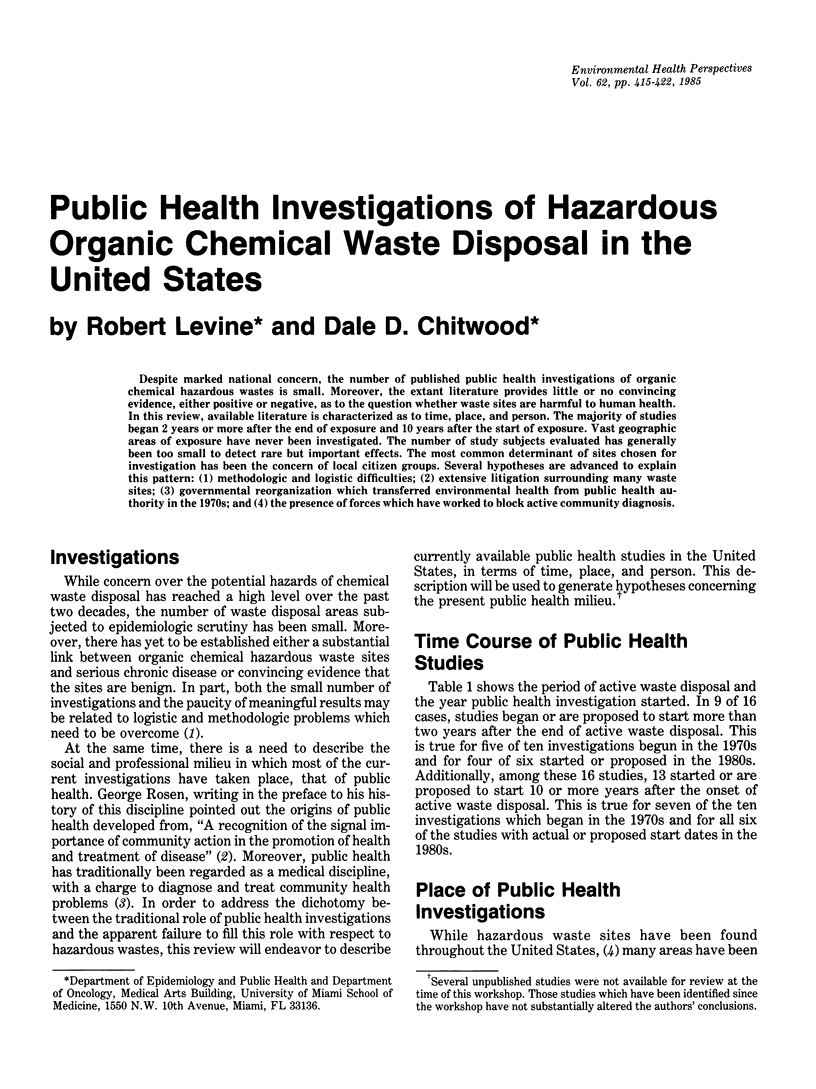
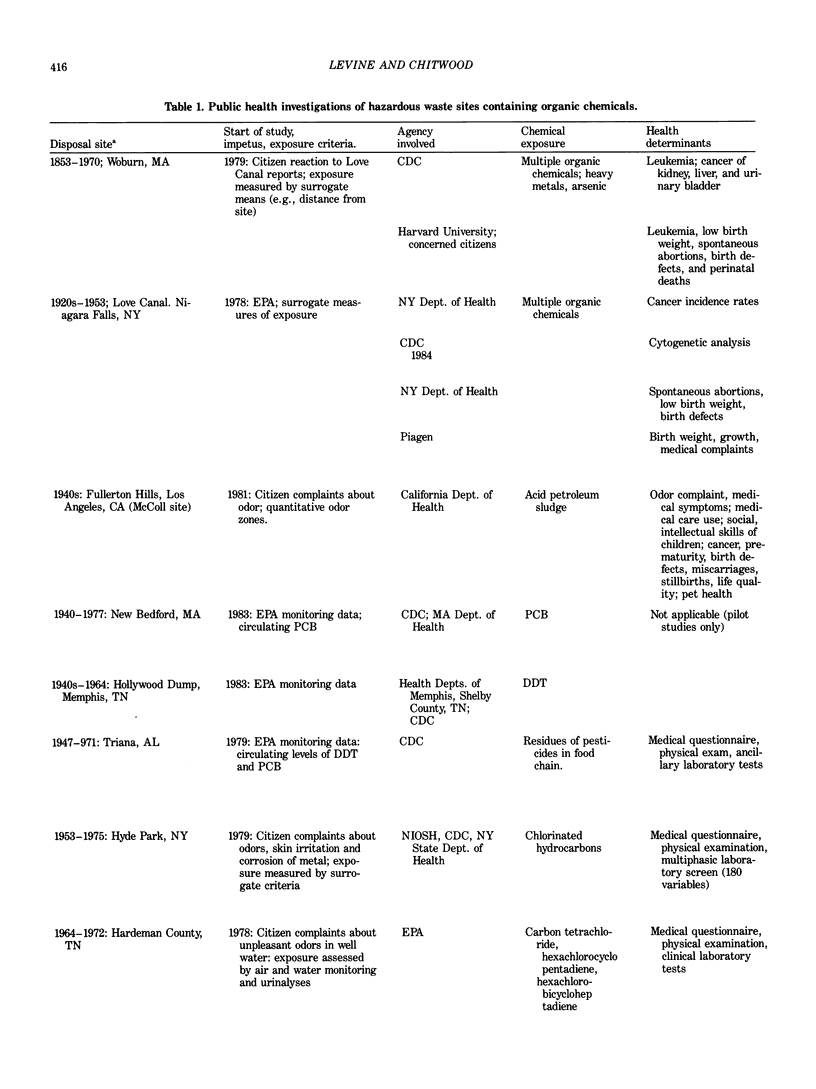
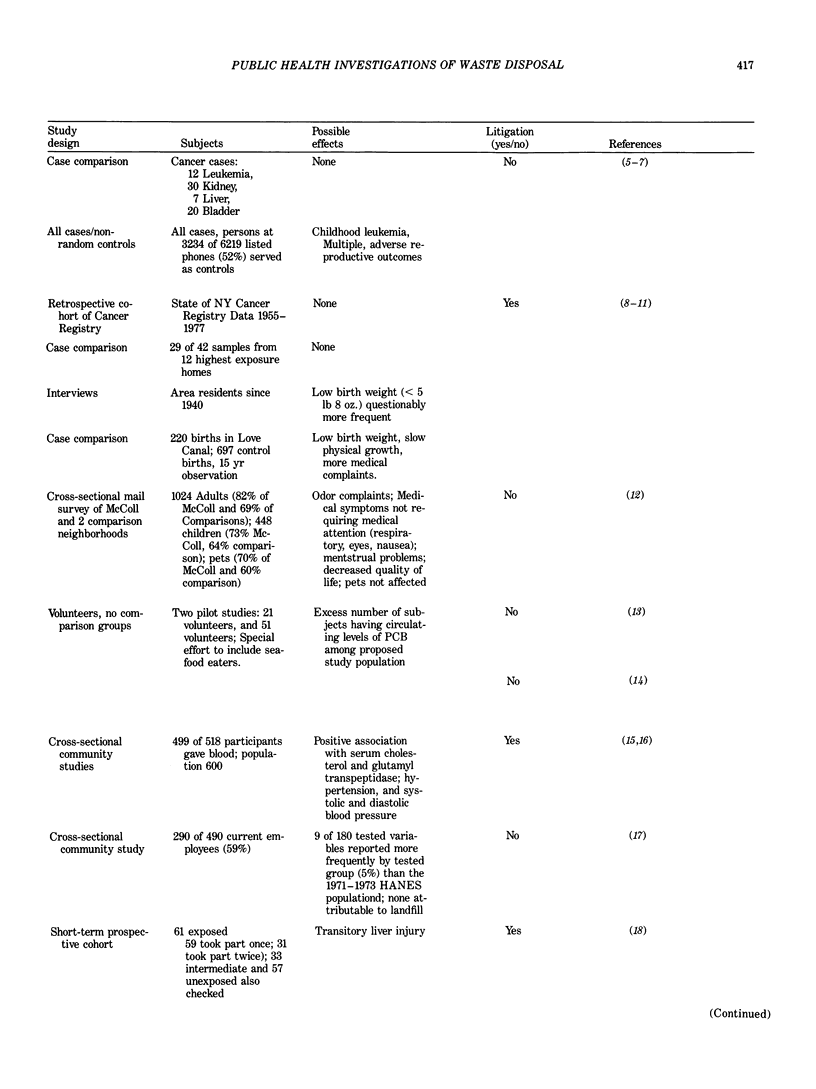
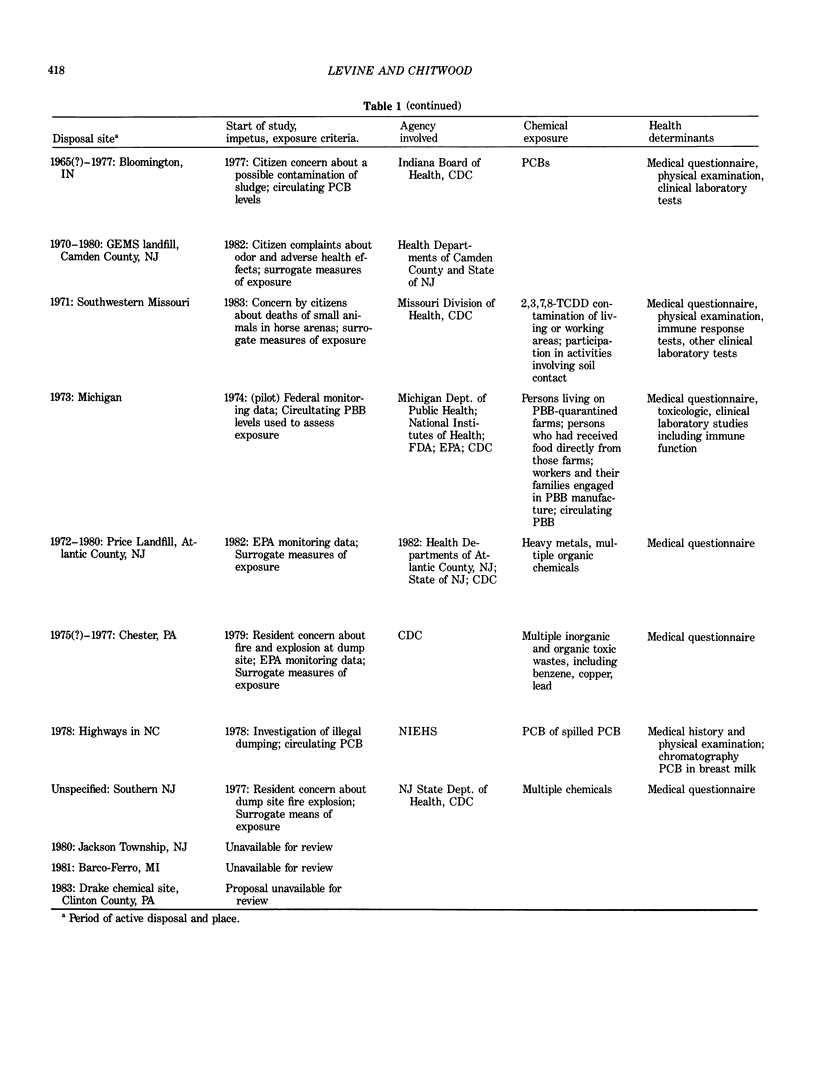
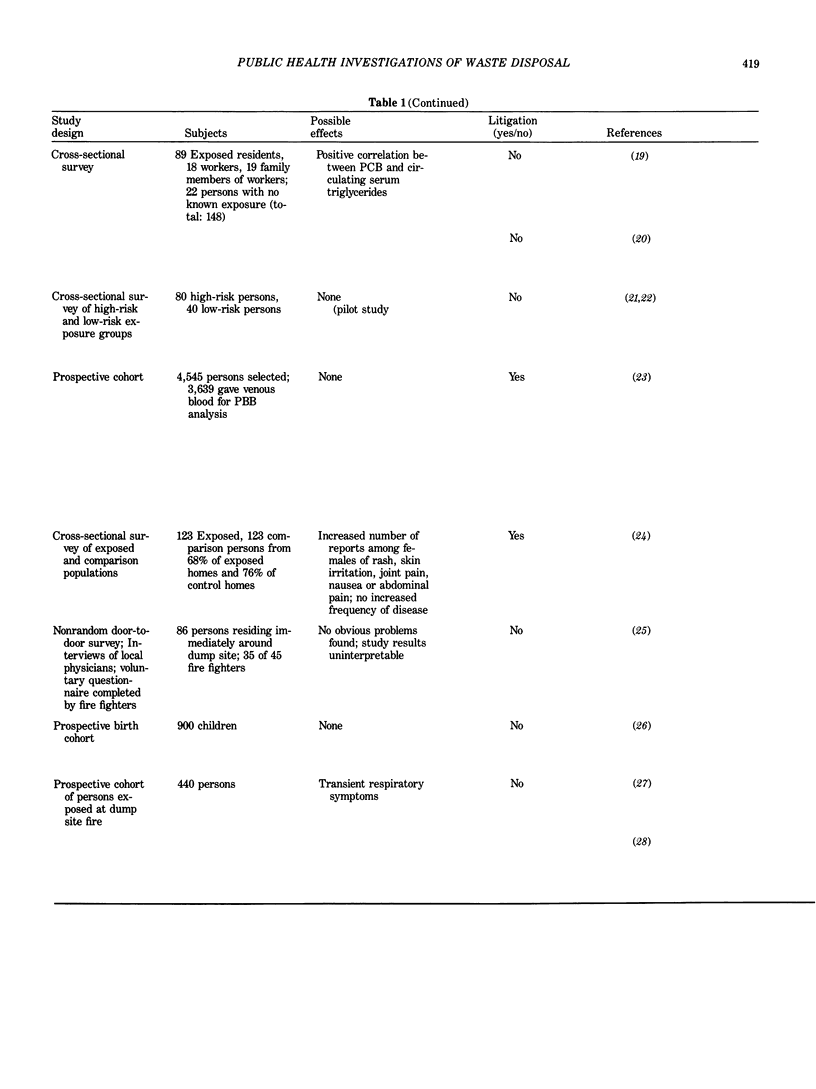
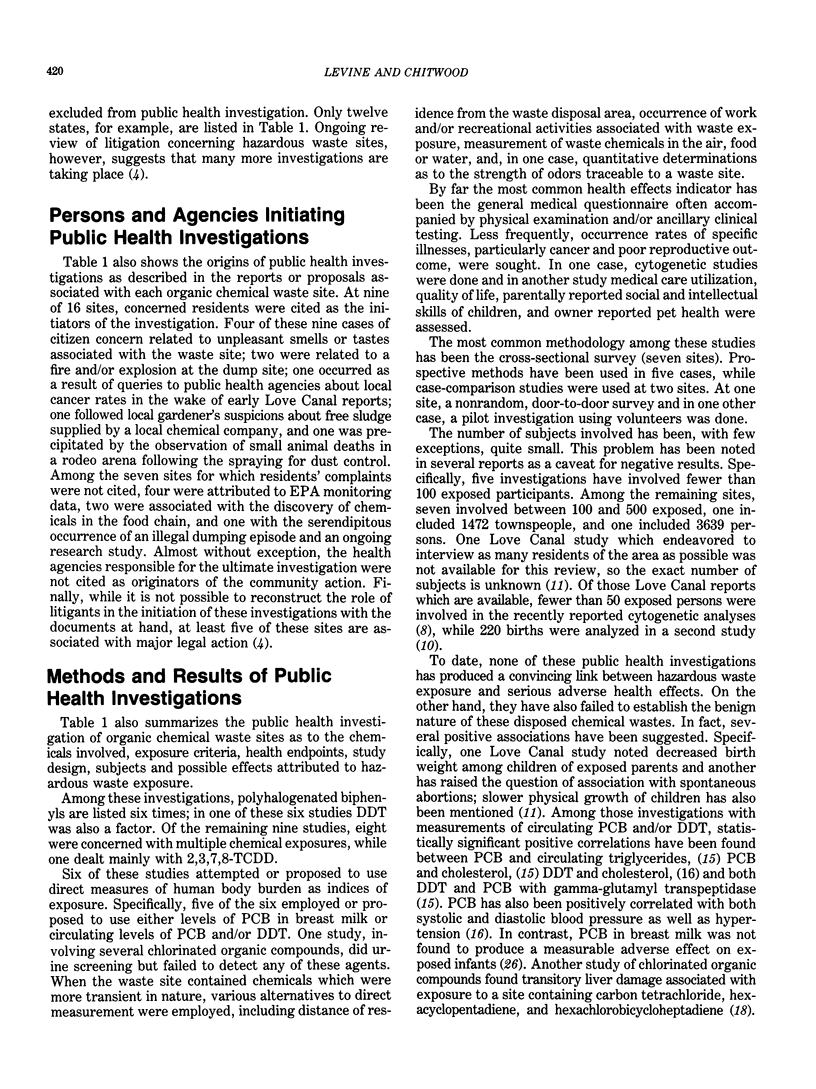
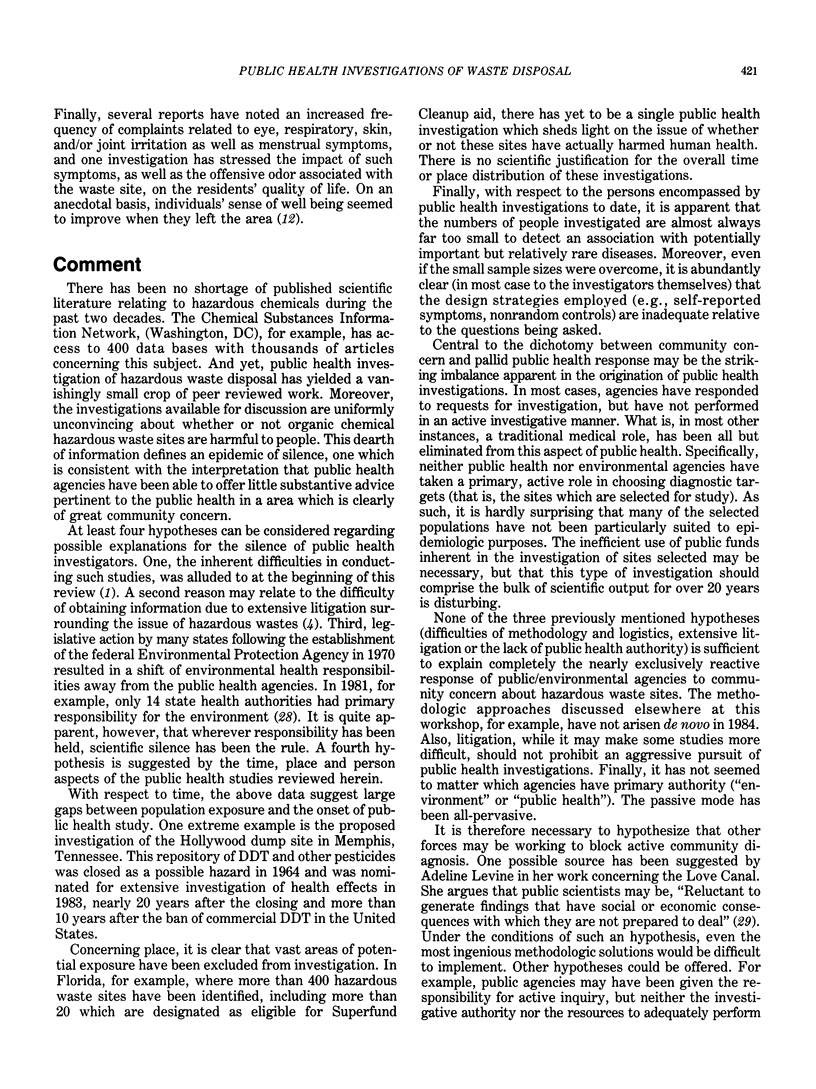

Selected References
These references are in PubMed. This may not be the complete list of references from this article.
- Baker E. L., Jr, Landrigan P. J., Glueck C. J., Zack M. M., Jr, Liddle J. A., Burse V. W., Housworth W. J., Needham L. L. Metabolic consequences of exposure to polychlorinated biphenyls (PCB) in sewage sludge. Am J Epidemiol. 1980 Oct;112(4):553–563. doi: 10.1093/oxfordjournals.aje.a113024. [DOI] [PubMed] [Google Scholar]
- Clark C. S., Meyer C. R., Balistreri W. F., Gartside P. S., Elia V. J., Majeti V. A., Specker B. An environmental health survey of drinking water contamination by leachate from a pesticide waste dump in Hardeman County, Tennessee. Arch Environ Health. 1982 Jan-Feb;37(1):9–18. doi: 10.1080/00039896.1982.10667526. [DOI] [PubMed] [Google Scholar]
- Halperin W., Landrigan P. J., Altman R., Iaci A. W., Morse D. L., Needham L. L. Chemical fire at toxic waste disposal plant: epidemiologic study of exposure to smoke and fumes. J Med Soc N J. 1981 Aug;78(9):591–594. [PubMed] [Google Scholar]
- Heath C. W., Jr Field epidemiologic studies of populations exposed to waste dumps. Environ Health Perspect. 1983 Feb;48:3–7. doi: 10.1289/ehp.83483. [DOI] [PMC free article] [PubMed] [Google Scholar]
- Heath C. W., Jr, Nadel M. R., Zack M. M., Jr, Chen A. T., Bender M. A., Preston R. J. Cytogenetic findings in persons living near the Love Canal. JAMA. 1984 Mar 16;251(11):1437–1440. [PubMed] [Google Scholar]
- Kreiss K., Zack M. M., Kimbrough R. D., Needham L. L., Smrek A. L., Jones B. T. Association of blood pressure and polychlorinated biphenyl levels. JAMA. 1981 Jun 26;245(24):2505–2509. [PubMed] [Google Scholar]
- Kreiss K., Zack M. M., Kimbrough R. D., Needham L. L., Smrek A. L., Jones B. T. Cross-sectional study of a community with exceptional exposure to DDT. JAMA. 1981 May 15;245(19):1926–1930. [PubMed] [Google Scholar]
- Rogan W. J., Gladen B. C., McKinney J. D., Albro P. W. Chromatographic evidence of polychlorinated biphenyl exposure from a spill. JAMA. 1983 Feb 25;249(8):1057–1059. [PubMed] [Google Scholar]


